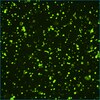539660 Sigma-AldrichPKCε, Human, Recombinant, S. frugiperda
お勧めの製品
概要
| Replacement Information |
|---|
価格&在庫状況
| カタログ番号 | 在庫状況 | 包装 | Qty/Pk | 価格 | 数量 | |
|---|---|---|---|---|---|---|
| 539660-20UGCN |
|
樹脂アンプル | 20 μg |
|
— |
| Product Information | |
|---|---|
| Unit of Definition | One unit is defined as the amount of enzyme that will transfer 1 nmol phosphate to PKC<sub>ε </sub>Peptide Substrate (<a href ="/Products/ProductDisplay.asp→catNO=539562">Cat. No. 539562</a>) per min at 30°C, pH 7.4. |
| Form | Liquid |
| Formulation | In 250 mM NaCl, 20 mM HEPES, 5 mM DTT, 2 mM EDTA, 2 mM EGTA, 50% glycerol, 0.05% TRITON® X-100 Detergent, pH 7.4. |
| Quality Level | MQ100 |
| Applications |
|---|
| Biological Information | |
|---|---|
| Purity | ≥85% by SDS-PAGE |
| Specific Activity | ≥800 units/mg protein |
| Concentration Label | Please refer to vial label for lot-specific concentration |
| Physicochemical Information |
|---|
| Dimensions |
|---|
| Materials Information |
|---|
| Toxicological Information |
|---|
| Safety Information according to GHS |
|---|
| Safety Information |
|---|
| Product Usage Statements |
|---|
| Packaging Information |
|---|
| Transport Information |
|---|
| Supplemental Information |
|---|
| Specifications |
|---|
| Global Trade Item Number | |
|---|---|
| カタログ番号 | GTIN |
| 539660-20UGCN | 04055977194197 |
Documentation
PKCε, Human, Recombinant, S. frugiperda (M)SDS
| タイトル |
|---|
PKCε, Human, Recombinant, S. frugiperda 試験成績書(CoA)
| タイトル | ロット番号 |
|---|---|
| 539660 |
参考資料
| 参考資料の概要 |
|---|
| Newton, A.C. 1995. J. Biol. Chem. 270, 28495. Dekker, L.V., and Parker, P.J. 1994. Trends Biochem. Sci. 19, 73. Nishizuka, Y. 1992. Science 258, 607. Bell, R.M., and Burns, D.J. 1991. J. Biol. Chem. 266, 4661. |
| データシート | ||||||||||||||||||||||||||||||
|---|---|---|---|---|---|---|---|---|---|---|---|---|---|---|---|---|---|---|---|---|---|---|---|---|---|---|---|---|---|---|
|
Note that this data sheet is not lot-specific and is representative of the current specifications for this product. Please consult the vial label and the certificate of analysis for information on specific lots. Also note that shipping conditions may differ from storage conditions.
|











 Antibody[214211-ALL].jpg)




[814761_Tetrakis-palladium(0)-ALL].jpg)